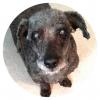Hi Pierre,
Rumbling around on Surface, see on the Surface Menu "Show Hidden Items", so check that and wow! - quite a few ~2 year old items pop up on Surface.
I don't know why they show up on Surface as "Hidden Items". So I check Properties of each item, including all subordinate items, and none are Surface1 checked.
Searched in Help for "Hidden Items" wondering if I somehow "hid" them but couldn't find anything except a Command Line reference.
The so-called "Hidden Items" that appeared on Surface all display normally in their home grid, so they don't appear to be "hidden".
Any idea why these "Hidden Items" show up on Surface when they're not Surface1 checked in Properties? Maybe Data Base Corruption?
thanks
Doug B

Comments
Hi Pierre, I pushed the…
Hi Pierre,
I pushed the surface feature too hard during my experimentation, and now I have surface layout data for many items that had already been deleted. Can I easily delete all layout data and start afresh (without distrubing my other data)?
By the way, I've found that the cleanest way to put items onto the surface is to only put the root item on the surface and branch all the other items under this parent item (all children are shown automatically). Otherwise, surface gets messy really fast if you (like I did) start to bulk add items AND their parents, and multiple copies of the same items are stacked on top of each other. The program also starts to slow down and even halts when there are too many items to draw and refresh.
I really like this "experimental" feature of InfoQube--I would love it if this feature is made more scalable and there is an easy way to manually garbage collect and delete out of sync data.
I am seeing the same issue…
I am seeing the same issue that Patrick described, where Surface retains layout data for deleted items. For example:
I guess the loophole here is that, if the items are deleted from a regular grid, the special dialog options are not shown (as they would be if deleting from Surface view).
Hi patrick and lucasd,…
Hi patrick and lucasd,
Indeed... In the next version: